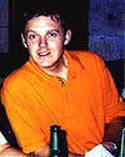|
OF OTHER FORTEAN “HEAVY WEIGHTS” It might be just to add the married couple Janet and Colin Bord, late Ivan Sanderson, John Michell, and John A. Keel [with his “Strange Mutants: From Mothman to Demon Dogs and Phantom Cats] to the above company of the well known heavy-weights. Here also belong Theo Paijmans [with his amazing “Free Energy Pioneer: John Worrell Keely], and John Collins [with his rare gem - and his only published book - “Perpetual Motion: An Ancient Mystery Solved?”. The Paijmans’ book, as its title suggests, deals with the life and work of one John Keely - easily one of the most controversial people in the scientific community of the 19th/20th centuries. Keely claimed to have designed the machines that can run on free and unlimited energy. There are photographs of such machines but, unfortunately, nothing more. Paijmans’ book, a well presented in-depth research, gives us numerous insights into the mysterious life of a genius.. or a nutty charlatan - the reader is left to his/her own better judgment. Nothing less can be said of Collins’ work. In fact, it remains one of the best (and perhaps the only one approaching this topic in a scientific method) reviews of the life and work of another mysterious personality. A man, an elder scientist of the 18th century, had put forth a claim that he invented a perpetuum mobile system. Not only that he vouched his machine worked, he actually gathered a select audience (of contemporary nobles) and demonstrated it did. We today inherit only some indecipherable blueprints, among them the blueprint for “The Perpetual Motion Wheel”. Though Collins had exhausted the known sources in his fascinating benchmark work (one and only of such scope with focus on precisely this topic), he falls short of providing the reader with the definitive clues as to the exact workings of the Wheel. That secret was probably entombed with the engineer himself. I will not divulge who the engineer of the Wheel was, or any other details for that matter, simply because anyone interested can easily access a number of web-pages filled with this info. For those of you wanting to pursue this mystery further, please refer to Collins’ (somewhat difficult-to-find) book filled with invaluable clues. OF NIKOLA TESLA
Among the authors of mystery-machines one name stands out - that of Nikola Tesla. Tesla’s genius was unsurpassed and he easily deserves to be studied apart from anyone. There is much well researched material published to allow this. However, a serious student should still be careful as there is also much shortsighted pulp that might hinder his/her research efforts. All in all, it is worth noting that Tesla was not only a remarkable scientists but a fascinating person altogether. OF COOPER-OAKLEY’S ‘COUNT ST. GERMAIN’ One of the interesting historic personalities was a man known as Count St. Germain. In his very good “The Comte de St. Germain: The Secret of Kings”, I. Cooper-Oakley provides much about this - almost other-worldly - person who rubbed elbows with crème-de-la-crème of the contemporary European courts from Russia to France, who spoke more than twenty languages and claimed to be immortal. Cooper-Oakley’s book remains probably the most documented such work. OF FUN READS WITH DUBIOUS FACTUAL VALUE I’d like to now dedicate a few lines to the authors whose works, for the reasons known only to the deep, innermost regions of my brain unreachable by any conscious efforts, somehow form a cluster, although, at times, the topics of their research may seem completely at odds with one another. Not a person (or a personality), but a mysterious creature nevertheless, is written about in tandem by James F. McCloy and Ray Mille Jr. in their works “The Jersey Devil” and “The Phantom of the Pines”. Anyone who has ever wondered about this terrifying mysterious creature that abides just a stone’s throw (if Clark Kent is throwing) from the New York’s banks of Hudson would certainly learn all that’s known by reading these two well documented fairly short volumes. In any event, they are written with a light touch of humor and make for a fun reading. Jan Lamprecht, with his shocking, but very scientifically developed, “Hollow Planets”, explores what’s probably the most incredible topic found in my collection. Namely, “Hollow Planets” is filled with some far-out facts as well as with scientific discussions springing from an old myth according to which Earth is a hollowed sphere. Lamprecht here ventures further than just exploring the possibility of the myth being a fact, and postulates a question of what, if anything, could be contained in such hollowed space if, in fact, such space did exist. Quite an interesting book. Perhaps even more so because it starts with Lemprecht’s recognition of oddity of the whole such thesis and his kind request that the book be given its chance and fully read before an opinion as to its value is formed. Rather catchy way to increase the likelihood that those who pick it up will actually get to its back-cover, give it a chance. “Hollow Planets” earned mostly favorable reviews on Amazon.com. I also give it my cordial commendations. Among more interesting fun-to-read authors I also include Graham Hancock, Robert Bauval, Rand Flem-Ath, Colin Wilson and, last but not least, German writer Otto Much. Hancock and Bauval, much like Flem-Ath and Wilson, often work together. Their works abound with the research about edifices shrouded in mystery, built by unknown builders for an unknown purpose, but they also touch up on varies other mysteries such as the origin of underwater cities, or location of once populated and now vanished continents. Flem-Ath’s and Collins’ theories grew out of those that claim civilizations could have been destroyed by the unfavorable movements of the tectonic plates. The founder and champion of such theories was a largely misunderstood genius, late Charles Hapgood. Whether the mentioned authors reveal to us the truth or not… who knows? Regardless, their works are interesting and warrant reading and, in some ways, further research. Obviously, I have here treaded a bit on the grounds of the second, Theorizing, group of authors.
0 Comments
Leave a Reply. |
Nino Martinović[email protected] Archives
August 2008
Tags
All
|


 RSS Feed
RSS Feed